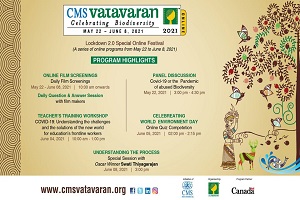A proposed township and area development project proposal on the Great Nicobar Island is likely to impact turtle and megapode nesting sites and affect coral reefs, according to the project documents seen by HT, even as the Union environment ministry’s Expert Appraisal Committee (EAC) has recommended it for grant of terms of reference (TOR). The grant is one of the first steps in the environmental clearance process. It involves assessing the environmental impact of a project based on the scope and details disclosed by the applicant.
The EAC has also raised concerns about the project, according to the minutes of the panel’s meeting on April 5 and 6 uploaded on the Parivesh website late last month. “The Committee notes that the site selection for the port component has been done keeping primarily the technical and financial viability in place. The environmental aspects were not given much weightage while selecting the site. The Island has a large number of endangered species including Leatherback Turtle at the Galathea Bay,” the minutes said.
The EAC called for involving an independent specialised institution such as the National Institute of Ocean Technology, National Centre for Coastal Research, National Institute of Oceanography for the technical aspect of the project. It suggested research institutes such as the Zoological Survey of India and Wildlife Institute of India for ecological assessment of the project related to Island ecosystems, its terrestrial and marine flora and fauna.
The EAC said an independent study/evaluation for the suitability of the proposed port site with a specific focus on Leatherback turtles, Nicobar Megapode and Dugong should be carried out.
The proposed township is expected to cover an area spread over 149.60 square km of which 28.27 square km is revenue land, 8.37 square km is deemed forest and 112.96 square km is forest land.
According to the summary of the project, the “preparation of Master plan for Holistic Development of Great Nicobar Island in Andaman & Nicobar Islands’ (prepared by Niti Aayog) is to enable the overall development of Great Nicobar Island, with a diverse and robust economy based on maritime services, tourism amongst other economic drivers.”
The project involves the development of an international container transhipment terminal (ICTT), greenfield international airport, township and area development and power plant.
The summary said the proposed port will allow Great Nicobar “to participate in the regional and global maritime economy by becoming a major player in cargo transhipment. The proposed airport will support both the maritime sector and the tourism sector, which will attract international and national tourists to Great Nicobar to experience the outstanding natural environment and participate in sustainable tourism activities”. The project is worth ₹75,000 crore.
AECOM India, a Gurugram-based consultant, has prepared the pre-feasibility report for Niti Aayog as per documents on Parivesh portal. The report said four interlinked projects will add considerable socio-economic value at a relatively low social and environmental cost. “The ICTT and Power Plant project sites are uninhabited. Only the airport project requires resettlement, and the number of affected persons is low. The large majority of the existing corals have been avoided... The urban development will be kept on a small footprint along the edges of the island that are least frequented by the Shompen and the Nicobarese (indigenous people).”
Deepak Apte, marine ecologist and chairman of EAC Infra 1, said he cannot speak further on the project. “My TOR speaks for itself.”
On Tuesday, HT reported EAC on Infra 2 has raised concerns on the ecological impact of constructing a water aerodrome at Swaraj Island, formerly Havelock Island in Andaman and Nicobar Islands. The aim of the project, a part of the Centre’s Udan scheme (for regional airport development), is to connect remote areas of the island to Port Blair to promote tourism.
Bivash Pandav, director, Bombay Natural History Society, on Monday cited the high level of endemism in the species found in the Andaman and Nicobar Islands and their uniqueness while calling for the need to be careful about any infrastructure projects. “In the case of Galathea in Great Nicobar, as we know, it is among the most important and largest nesting sites for leatherback turtles in India. The nesting and distribution of leatherback turtles are restricted to the Andaman and Nicobar Islands,” said Pandav.
Manju Menon, a senior fellow at New Delhi’s Centre for Policy Research, said the Indian government has historically managed the Islands for geostrategic reasons. “So, it is a stretch to claim that this audacious project is planned for the island’s development. If we understand that and we see it in relation to India’s port policies and their poor outcomes, this project should first answer many fundamental questions in addition to the environmental issues.” Menon said the designers of the project ought to take some time to review the massive global changes brought on by Covid-19 instead of simply continuing with this project. “Because if we just continue like nothing has changed, we may not only have no development from this, and the project will have taken over most of the habitable area on that island and destroyed its very unique and rich ecology forever.”

